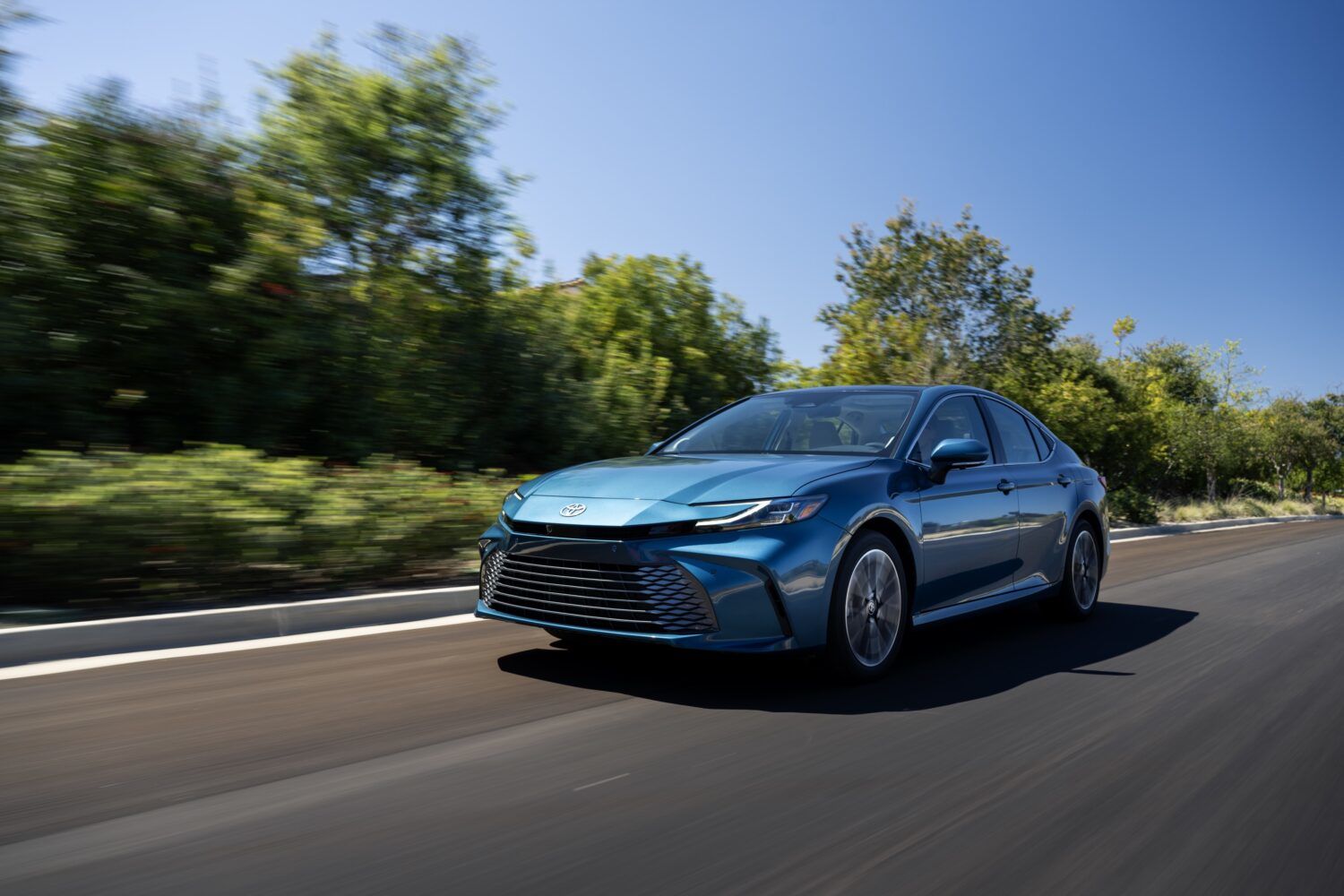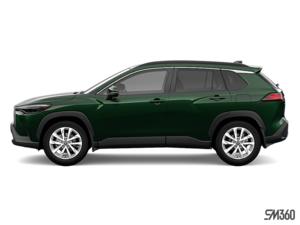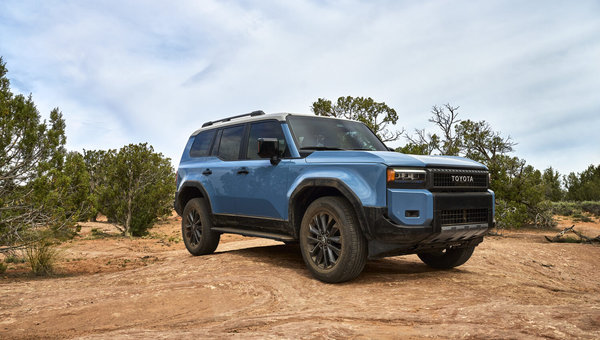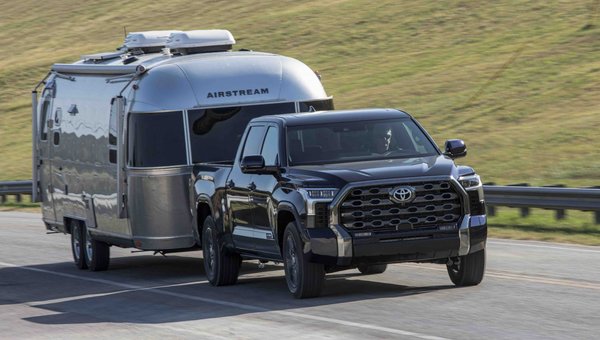Toyota Safety Sense 3.0 Explained: All the Systems That Protect You
July 28 2025,

Toyota Safety Sense 3.0 represents the latest evolution of Toyota's active safety technology, now standard on select 2025 models including the Land Cruiser, bZ4X, and upcoming C-HR. For Canadian drivers navigating diverse road conditions from urban traffic to rural highways, these systems work together to help prevent accidents before they happen.
Unlike basic safety features that only respond after a collision begins, Toyota Safety Sense 3.0 uses cameras and radar to monitor your surroundings continuously. The system can detect vehicles, pedestrians, cyclists, and motorcycles, then provide warnings or take corrective action when potential dangers are identified. Understanding how these technologies work helps you drive more confidently while knowing when to rely on the systems and when to take manual control.
How Pre-Collision System Protects Multiple Road Users
The Pre-Collision System with Pedestrian Detection forms the foundation of Toyota Safety Sense 3.0. Using both camera and radar sensors, this technology monitors the road ahead for vehicles, pedestrians, cyclists, and motorcycles that might present collision risks.
When the system identifies a potential collision, it first provides audible and visual warnings through the dashboard display. If you don't respond by braking or steering, the system can automatically apply emergency braking to help avoid the collision or reduce its severity.
The system works at various speeds and conditions:
- Vehicle detection: Operates at all speeds
- Pedestrian detection: Functions during daytime and low-light conditions
- Cyclist detection: Works in daylight hours
- Motorcyclist detection: Operates during daytime driving
This technology particularly benefits Canadian drivers dealing with winter conditions, where reduced visibility and slippery roads can make emergency stops more challenging.
Dynamic Radar Cruise Control for Highway Confidence
Full-Speed Range Dynamic Radar Cruise Control maintains your set speed while automatically adjusting to match traffic flow. Unlike traditional cruise control that maintains only speed, this system uses radar to monitor the vehicle ahead and can slow down, stop, and resume movement in stop-and-go traffic.
You can set following distances to maintain comfortable space between vehicles, helpful for different driving personalities and road conditions. On Quebec highways like the 417 or 5, where traffic patterns vary throughout the day, this system reduces fatigue during longer commutes.
The system operates from full stop to highway speeds, making it useful in both urban traffic and open-road driving. When traffic clears, the system automatically returns to your preset speed, maintaining smooth acceleration without sudden speed changes.
Lane Assistance Technologies Working Together
Toyota Safety Sense 3.0 includes two complementary lane technologies that work together to help keep you properly positioned on the road.
Lane Departure Alert with Steering Assist monitors lane markings and road edges at speeds above 50 km/h. When the system detects unintentional lane departure—such as drifting due to fatigue or distraction—it provides audio and visual warnings. If you don't make corrections, the system can provide gentle steering input to help guide you back into your lane.
Lane Tracing Assist takes this further by actively helping center your vehicle within the lane markings. This system works in conjunction with Dynamic Radar Cruise Control, providing gentle steering adjustments to maintain lane position during highway driving. It's particularly helpful during longer trips when driver fatigue might affect steering precision.
Both systems recognize when intentional lane changes occur, such as when you signal and actively steer, avoiding unnecessary interventions during normal driving maneuvers.
Road Sign Assist for Important Information
Road Sign Assist uses the forward-facing camera to recognize and display important road signs on your dashboard. The system identifies speed limit signs, stop signs, yield signs, and other regulatory signage, showing this information on the Multi-Information Display.
This feature proves especially valuable when driving in unfamiliar areas or when signs might be partially obscured by weather conditions. In Quebec, where bilingual signage is common, the system helps ensure you don't miss important traffic information regardless of the language displayed.
Intelligent Lighting with Automatic High Beams
Automatic High Beams detect oncoming vehicle headlights and taillights of vehicles ahead, automatically switching between high and low beams as appropriate. This ensures maximum visibility during nighttime driving while avoiding glare for other drivers.
The system activates high beams when no other vehicles are detected, then immediately switches to low beams when traffic approaches. For rural Quebec roads where wildlife encounters are possible, this automatic management helps maintain optimal visibility without requiring constant manual adjustment.
Proactive Driving Assist for Everyday Situations
Proactive Driving Assist represents the newest addition to Toyota Safety Sense 3.0, using camera and radar data to provide gentle assistance during everyday driving scenarios. The system can provide subtle braking or steering inputs to help with:
- Maintaining appropriate distance from vehicles ahead
- Navigating curves more smoothly
- Avoiding pedestrians and cyclists
- Managing speed in various traffic conditions
Unlike emergency interventions, these inputs are designed to feel natural and supportive rather than dramatic. The system learns typical driving patterns and provides assistance that complements rather than overrides your driving style.
Understanding System Limitations
While Toyota Safety Sense 3.0 provides significant safety benefits, understanding its limitations ensures proper use. Weather conditions like heavy snow, fog, or rain can affect sensor performance. Construction zones with unclear lane markings might confuse lane assist systems. Steep hills or sharp curves can temporarily limit radar range.
The systems require clear windshield areas around cameras and sensors to function properly. Regular cleaning, especially during winter months when road salt and debris accumulate, helps maintain optimal performance.
Most importantly, these technologies assist rather than replace attentive driving. They're designed to help prevent accidents when you're driving normally but might miss a hazard due to distraction or environmental factors.
Canadian Road Condition Adaptations
Toyota Safety Sense 3.0 systems are calibrated to handle Canadian driving conditions, including winter weather scenarios. The Pre-Collision System accounts for longer stopping distances on snow or ice, while lane assist technologies can detect lane markings even when partially covered by snow.
However, extreme weather conditions might temporarily reduce system effectiveness. Dashboard indicators show when systems are temporarily unavailable, allowing you to adjust your driving accordingly.
Models Featuring Toyota Safety Sense 3.0
Currently, Toyota Safety Sense 3.0 comes standard on the 2025 Land Cruiser and bZ4X electric SUV. Other Toyota models feature Toyota Safety Sense 2.5+, which includes many similar functions with slightly different specifications.
As Toyota continues updating its model lineup, more vehicles will receive the 3.0 system. Check with specific model information to confirm which safety systems are included.
Contact us at Toyota Gatineau to experience Toyota Safety Sense 3.0 firsthand and learn how these technologies can enhance your daily driving confidence on Quebec roads.




